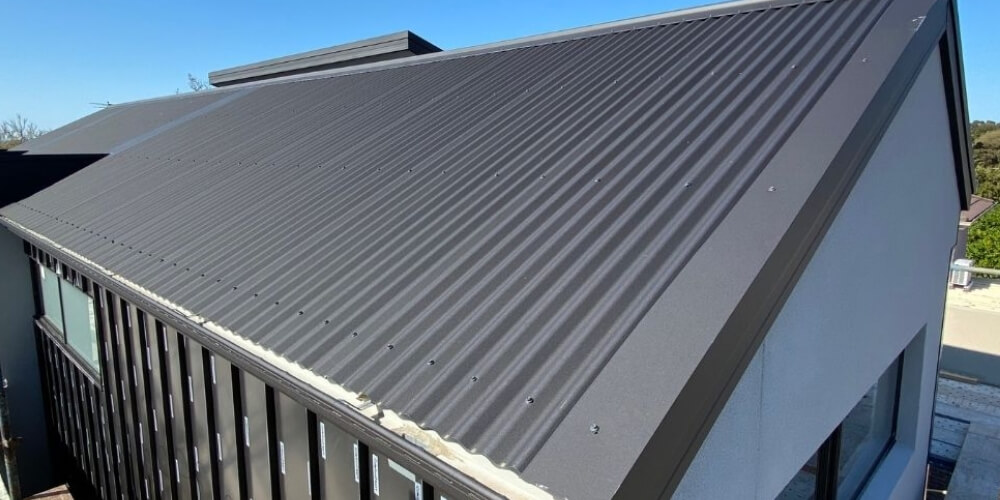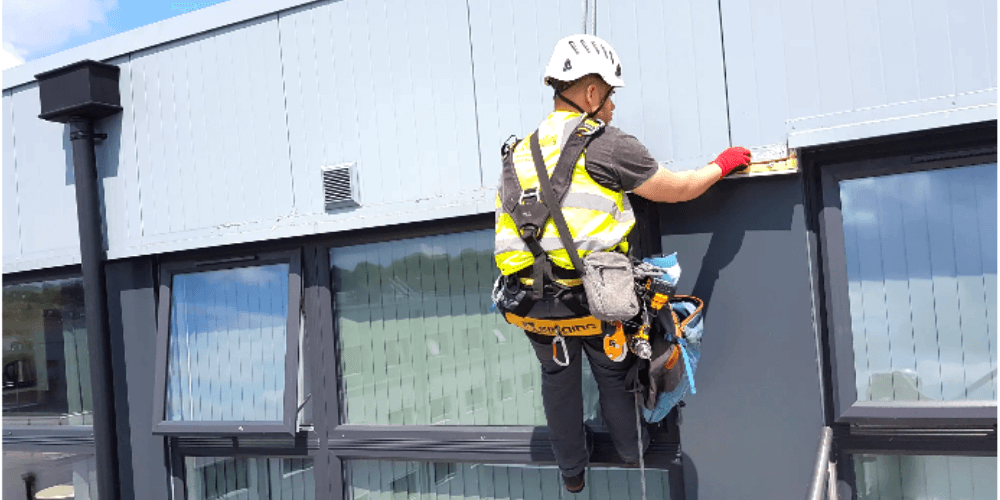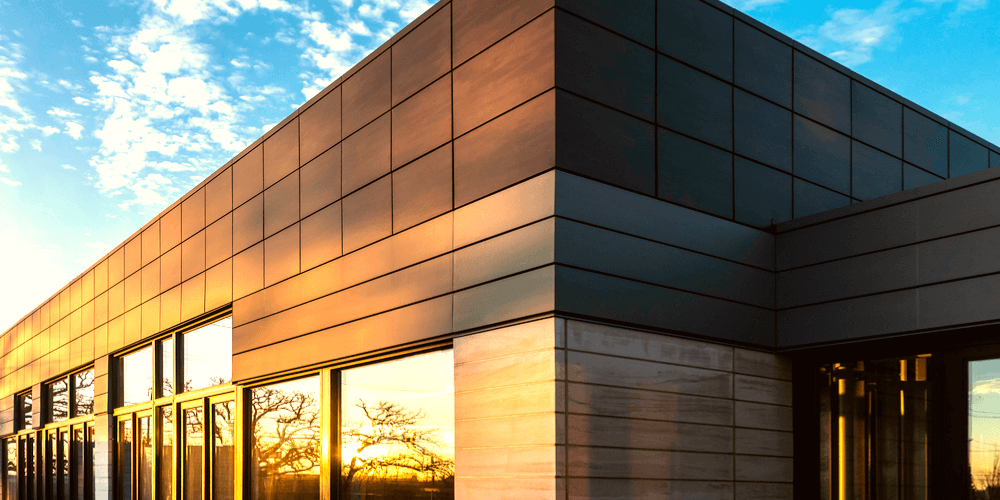How To Paint Metal Cladding?
Over the past few decades, metal cladding has stolen the show as the top choice for commercial buildings and installations. It’s durable and sleek and gives your structure that polished look. But here’s the deal – as time goes by, you’ve got to make the call on the right metal cladding paint for your property.
However, like any part of your house, your roof cladding is not immune to wear and tear. You might notice the color dancing, turning a bit chalky, or rust showing up, especially around those trusty bolts and fasteners.
But you might be wondering, can you paint a metal cladding? Definitely, yes! As experienced cladding installers in Melbourne for almost 20 years, we’ve seen it all. The good news is that with the right techniques and quality metal cladding paint, you can breathe new life into your structure, ensuring it looks fantastic and stands up to the elements with resilience.
In This Article

Can You Paint Metal Cladding?
In a nutshell, the answer is yes. As a cladding company with lots of experience installing and maintaining cladding materials, we consider painting metal cladding as a practical and efficient solution, whether you want to update the look, prevent corrosion, or change the colour to fit your changing style preferences.
Why Paint Your Metal Cladding?
Enhancement of Aesthetics: Metal cladding may exhibit fading, discoloration, or wear over time. Applying a new coat of paint can revitalise the appearance and give your home a sleek, contemporary appeal.
Protection Against Corrosion: Due to its environmental exposure, metal cladding is susceptible to rust or corrosion over time. Good paint serves as a barrier to protect the metal from the elements, increasing its lifespan.
Customization: Whether you want to match your cladding to a new design scheme or simply update its look, painting allows for customization. The possibilities are virtually endless, allowing you to achieve the aesthetic you desire.

How To Paint Metal Cladding?
Painting metal cladding is an excellent method to make your building’s exterior more appealing. Cladding provides aesthetic value to the structure for which it is installed. Metal cladding is somewhat more challenging to install than other types of cladding. While it is true that painting on more complex materials is much easier than painting on softer ones, painting metal cladding takes time, dedication, and imagination.
The several steps to be undertaken for metal cladding painting involve:
Choosing A Paint Colour For Your Metal Cladding
The first and most crucial step is to choose a colour. Selecting the correct colour for your metal claddings is much more essential than you may imagine. Any colour you pick must be appropriate for your needs. However, you must exercise caution in choosing a colour for your metal cladding. It’s not a good idea to use bright colours while painting the metal cladding of a modest house in the suburbs. As a result, one must choose a colour that complements the whole structure.
Deciding On How You Would Like To Paint
The next step is to choose the process of painting your metal cladding. If you’re going to paint metal cladding yourself, spray paint is the way to go. However, traditional brushes and rollers may also be used to paint; using these requires a bit more care. Metals have many curves, which may be difficult to reach with a conventional brush. However, in the right hands, the brush may also perform well. When painting metal claddings, spray painting is the most outstanding choice for giving your structure a solid, professional appearance. Painting your metal cladding using a brush, on the other hand, is also an option so long as you’re prepared to put in the effort.
Applying a Base Coat
When painting metal cladding, it is essential to follow the correct procedures. If your structure is brand new, you may need to prime it first. Additionally, if your structure needs it, you must apply an undercoat first to ensure that the paint adheres to the surface. The use of an undercoat extends the longevity of your paintwork. Overall, if the painting is done correctly and carefully, it may endure for fifteen to twenty years before you need metal cladding re-spraying. In this scenario, you may use a variety of primers and undercoats. However, before you start painting, you should make sure that your structure requires either. You may look up the many kinds of primers on the market and which one to use on the internet.
Priming
Primer is not required for all cladding systems. On the other hand, primers may preserve the surface against deterioration and offer a simple foundation for applying a topcoat. If there are rust spots, spot priming may be required to address those minor issue areas. Ignoring these difficulties will lead to more severe problems in the future. Surface flaws will always show through unless suitable materials are used to coat them.
A metal cladding primer is recommended for priming cladding that hasn’t been painted previously. It’s excellent for bare metal surfaces, giving the necessary protection while also preparing the surface for the topcoat. It may be painted directly on fresh or worn cladding to prevent it from further oxidation.
After that, you may apply the topcoat using whatever method you want. However, it’s essential to verify that the corroded parts have been addressed to guarantee the system’s lifespan.
Metal Cladding Topcoat
After the surface has been well primed, you may begin applying the topcoat. The metal cladding topcoat is the best topcoat to use if you apply the correct method of priming.
There is no need to prime if the cladding has already been painted and the current layer of paint is still in good condition. Commercial structures are often exposed to the elements. The most frequent problem they encounter is UV exposure, which causes the paint to fade. Metal cladding topcoat is excellent if all you want to do is alter the colour of the topcoat or just freshen it up.
Painting claddings should be done as little as possible to avoid making a mess. The number of connections should be kept to a bare minimum if more than one colour is involved. Remember that this kind of painting requires accuracy, so be sure to use the proper tools. If you’re spray painting, make sure you have the appropriate spray painter so your metal cladding is as beautiful as you want it to be. You may also look for the most acceptable kinds of paint and choose the one that best suits your requirements. If you run into problems when painting, keep in mind that you can always hire a professional to finish the work for you.
How to Complete Your Painting Project Correctly
Keeping track of the paint colours you use on a project
After a while, do you have trouble remembering if you used snow-white or shell white, sky-blue or darker one, in the project you completed? Silky or glossy, which was it? Here are some quick suggestions for writing down these facts about metal cladding paint so you won’t forget them later.
It may seem that the work is over the moment you clean your brushes and roll up and move to the next one or relax. Wait for a moment, at least.
Whether you’re painting a more extensive installation or many smaller ones at once or gradually adding colour, you’ll need a method to keep track of your selections, finishes, and details so you can quickly touch up scuffs or repaint later.
If that weren’t enough, keeping track of your project palette may help you finish touches for the space when you’re out shopping. The technique you choose to keep track of paint depends on your organizational style, but there are several alternatives that need little time or money to apply.
Here are some thoughts to get you started.
- Keep your paint manufacturer’s little colour sample jars in a cool, dry place for future reference. If they don’t have a colour sticker with their name on it, write it on the label.
- Save the used stir stick that has previously been painted. Once dry, write the brand, finish, colour name, and any other important information.
- Don’t forget to bring your colour cards. Paint a tiny sample into a notebook with your notes and keep it handy to use as a future reference.
- Spending a few additional minutes to record your colour choices, regardless of your technique, is well worth it.
The Concluding Word
Painting metal cladding is a straightforward way to prolong its lifetime by up to a decade by resisting corrosion, water, and UV radiation. Painting metal cladding is a lot less expensive than replacing or repairing unprotected cladding.
Metal cladding paints are available in a range of hues. They may be tinted to a variety of colours, allowing you to work with any colour scheme to give the metal cladding an excellent aesthetic appearance.

